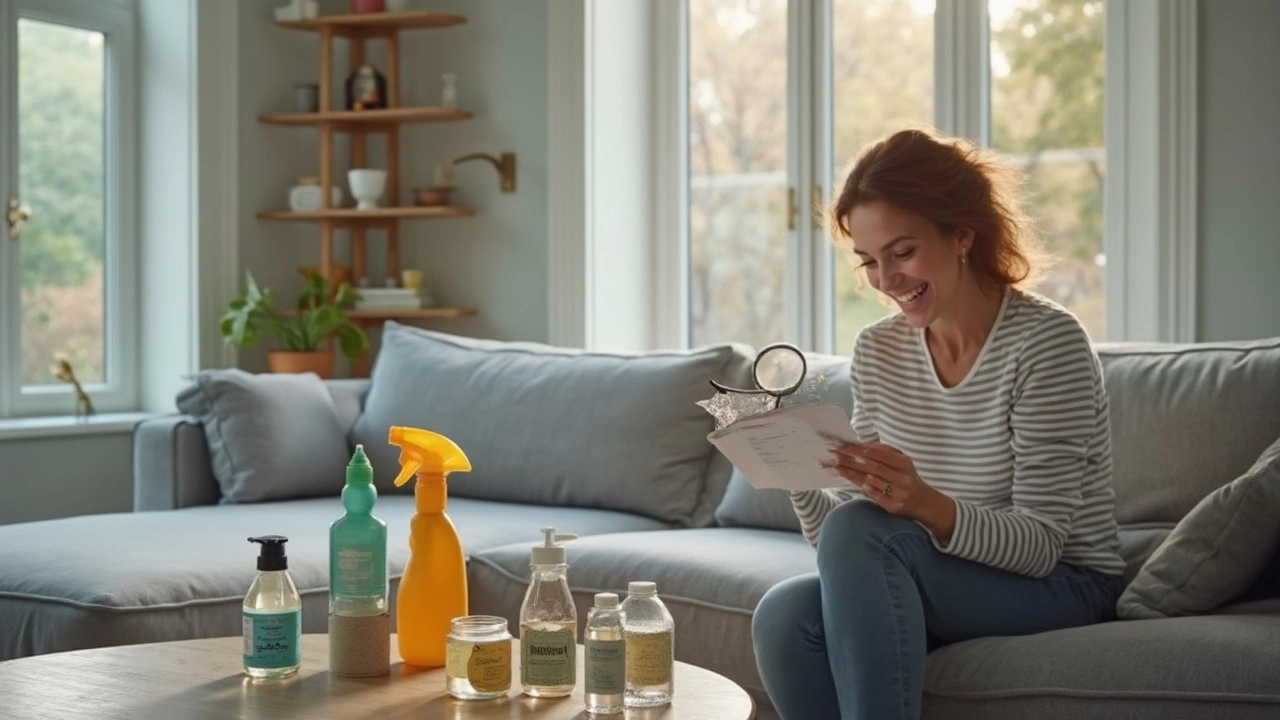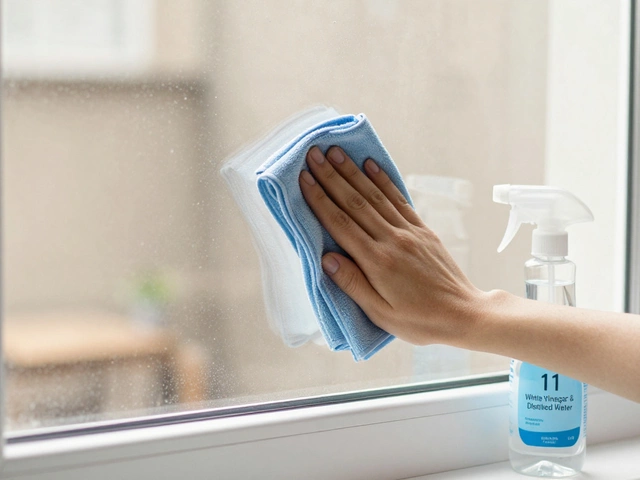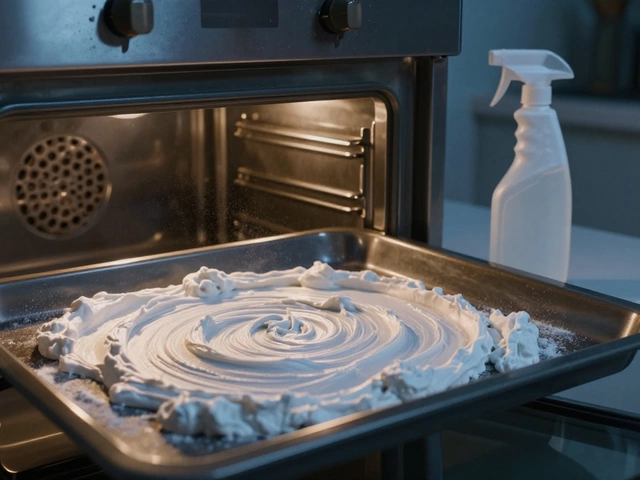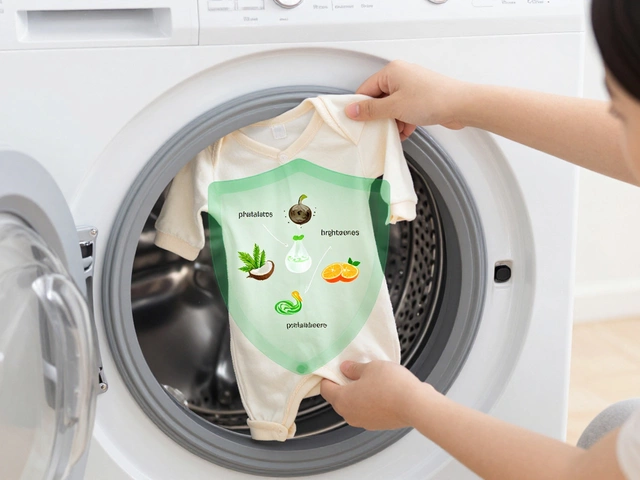Your couch probably sees it all: movie night snacks, muddy paws, a few mystery stains. Before you even think about spraying anything on it, you need to know what it’s made of. That little tag hiding under the cushion—yeah, the one nobody ever checks—actually tells you what kind of cleaner is safe to use. Mess this part up and you could end up with a bigger problem than a few cookie crumbs.
Most couches have these letters on their tags: “W” means you can use a water-based cleaner. “S” is for solvent-based. “WS”? You’re lucky—you can use either. “X” means the couch should only be vacuumed (seriously, don’t get it wet). If you toss the wrong cleaner on the wrong fabric, you’re risking water rings, faded colors, or stiff patches. Trust me, I’ve been there. My wife Amelia once used a regular all-purpose cleaner on our microfiber couch and ended up with a permanent water mark shaped exactly like our cat’s tail.
- Understanding Couch Fabrics and Cleaning Codes
- Best Types of Cleaners for Upholstery
- Spot Cleaning vs. Deep Cleaning
- Homemade Solutions That Actually Work
- Pro Tips for a Fresh, Stain-Free Couch
Understanding Couch Fabrics and Cleaning Codes
Not all couches are built the same. The fabric covering your sofa is a huge deal when picking the couch cleaner that actually works and doesn’t cause damage. Take a quick look at these common materials:
- Microfiber: Popular because it’s stain-resistant, but some cleaners can leave water rings.
- Leather: Needs gentle, specific products—no water-based spray here.
- Cotton and Linen: Breathable, but quick to soak up spills and stains.
- Velvet: A pain to clean if you use the wrong product, and easily shows marks.
- Polyester/Synthetics: Durable, usually easier to clean, but some solvents may discolor the fabric.
Every couch comes with a cleaning code tag—those little W, S, WS, or X letters. Here’s a quick breakdown:
| Code | What It Means | What To Use |
|---|---|---|
| W | Water-based cleaners are safe | Mild detergent, steam, upholstery shampoo |
| S | Solvent cleaners only | Dry cleaning solvent, rubbing alcohol |
| WS | Water or solvent—flexible | Upholstery shampoo or solvent cleaner |
| X | Vacuum only—no liquids | Vacuum, brush |
You’d be surprised how often people skip reading this tag. According to the American Cleaning Institute, more than 60% of folks jump right into cleaning without checking their furniture codes—and that’s usually when disasters happen, like big faded patches or crunchy fabric panels.
If the tag is wiped out, check your manufacturer’s website or test a small, hidden area before going all-in. Rubbing a little cleaner on a bottom corner lets you duck disaster before you mess up the entire sofa. Most important: skip bleach and heavy-duty all-purpose sprays unless your cleaning code screams it’s okay. These can ruin both the look and feel of your couch.
Best Types of Cleaners for Upholstery
Picking the best couch cleaner depends a lot on your fabric and stain type. Not every spray and foam is safe for every couch. Here’s a breakdown of what actually gets the job done without wrecking your sofa.
- Water-Based Cleaners: These are safe for most “W” and “WS” tagged couches—stuff like Bissell Upholstery Cleaner or Woolite Instaclean. They’re good for wiping out food stains, dirt, and general grime. Just spray, blot, and let dry.
- Solvent-Based Cleaners: If your couch tag says “S,” you’ll need these. Dry cleaning sprays like Blue Coral Upholstery Cleaner or rubbing alcohol work without water. They lift oily stains and are less likely to leave water marks on things like velvet or linen.
- Foam Cleaners: These are popular because they don’t soak the fabric. A quick layer, a gentle scrub, and stains lift out. Products like Resolve or Tuff Stuff are favorites if you want a fast refresh and a dry couch.
- Enzyme Cleaners: Dealing with pets or old odors? Enzyme-based sprays like Rocco & Roxie get rid of tough smells and stains from urine or food spills by breaking down the source. Always patch test first—enzyme cleaners are powerful, but not every fabric plays nice.
- DIY Cleaners: For a simple fix, some folks mix a little dish soap and water or equal parts vinegar and water. Spray lightly and blot. But don’t go wild with the water. If your couch needs moisture, use as little as possible and always use a clean, white cloth so colors don’t bleed.
Always do a patch test in an out-of-sight spot before going full steam ahead. Skip bleach, heavy-duty carpet cleaners, and anything not designed for upholstery—those are couch killers, plain and simple.
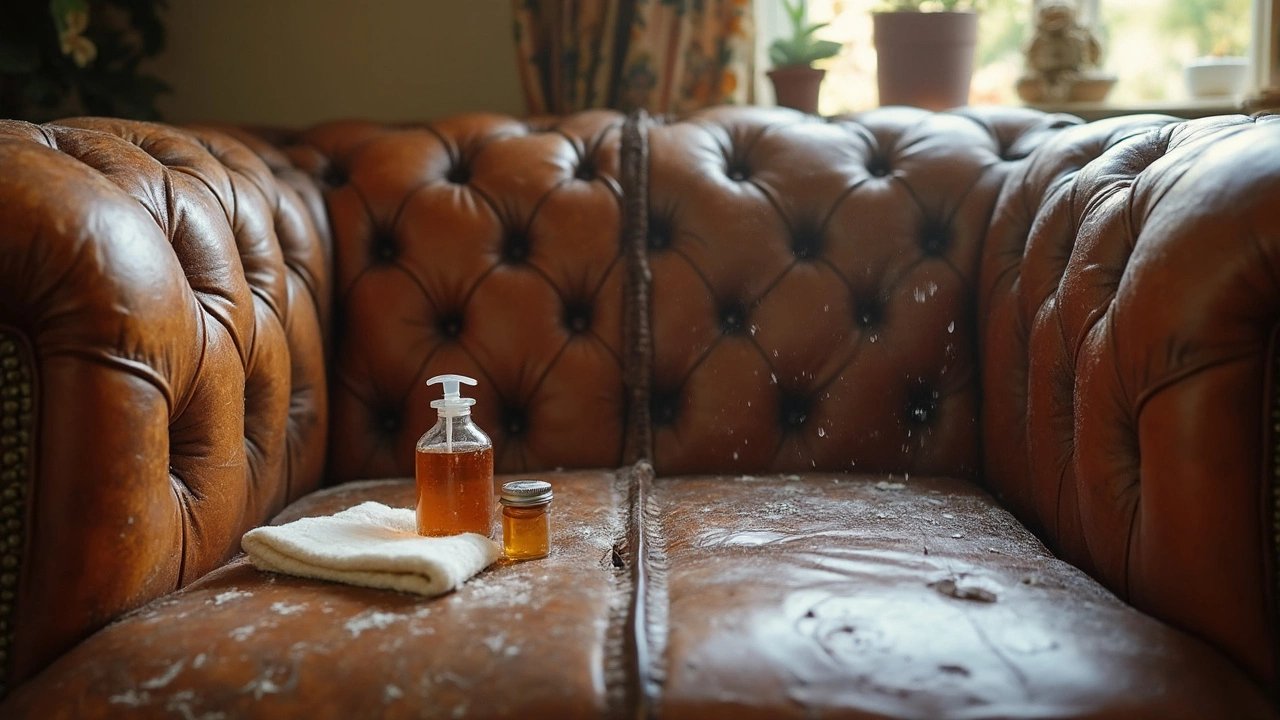
Spot Cleaning vs. Deep Cleaning
There’s a big difference between grabbing a towel to wipe up a spill and actually getting your whole couch really clean. Spot cleaning handles those little messes—think coffee splashes, ketchup drips, or pet accidents. Deep cleaning, though, is for the times your couch cleaner routine needs to go a level deeper, pulling out old dirt, body oils, or the weird smells that settle in after a few years of use.
Spot cleaning isn’t just about dabbing and hoping for the best. Actually, the right way to treat a stain is:
- Quickly blot (don’t rub) with a clean, dry cloth.
- Apply the cleaner that’s safe for your couch type (water-based, solvent, or specialty).
- Blot again with a damp cloth to lift out residue.
- Let the spot air dry, avoiding direct heat or sunlight.
Most spills and stains are easier to deal with if you catch them fast. The longer you wait, the more they sink into the fibers.
| Method | What It Fixes | How Often | Tools Needed |
|---|---|---|---|
| Spot Cleaning | Small, fresh stains or spills | As needed | Towel, approved cleaner, water |
| Deep Cleaning | Deep-set stains, overall grubbiness, odors | Every 4-12 months | Upholstery cleaner machine, steam cleaner, cleaning solution |
Deep cleaning usually means breaking out a wet vac, a carpet cleaner with an upholstery attachment, or calling the pros. This isn’t just about looks. According to the American Cleaning Institute, “Routine deep cleaning removes dust mites, allergens, and bacteria that regular surface cleaning can’t reach.”
“Allowing dirt, bacteria, and dead skin cells to build up inside upholstery doesn’t just affect your couch’s appearance—it could also impact indoor air quality.” – American Cleaning Institute (2023)
Want to DIY a deep clean? Pick a dry day, open your windows, and follow these steps:
- Start by vacuuming every inch of the couch—under cushions, along seams, and in the nooks.
- Test your chosen cleaner on a hidden spot first.
- Go section by section, lightly misting, scrubbing, and towel blotting excess moisture.
- Prop the cushions up to dry fully before putting everything back together.
The trick with both spot and deep cleaning is choosing the right product and never soaking the fabric. Too much water + slow-drying furniture = a musty smell you’ll never get rid of. Trust me, you do not want that.
Homemade Solutions That Actually Work
If you’re out of commercial cleaners or want to keep things simple—and cheap—homemade stuff can go a long way. The trick is picking the right combo for your couch type. Some DIY mixes can out-clean store-bought sprays if you use them right.
Here are a few go-to formulas:
- Baking Soda Shake-Down: For smells and light stains, sprinkle a good layer of baking soda over your dry couch and let it chill for at least 20 minutes. Suck it up with the vacuum. Baking soda grabs odors and loosens grime, making it an easy fix for in-between deep cleans.
- Vinegar + Water Mix: Great for fabric couches (with a "W" or "WS" code). Mix one cup of water and half a cup of white vinegar in a spray bottle. Add a tiny bit of dish soap if you want more punch. Mist lightly on the stain, blot—don’t rub—with a clean microfiber cloth, and you’re set.
- Rubbing Alcohol for Microfiber: Get a spray bottle, fill with isopropyl alcohol, and lightly spray the stained spot. Blot with a white sponge till the stain lifts. Once dry, fluff the fibers with a new sponge or soft-bristled brush. This hack works wonders, even on marker lines.
Check this quick cheat sheet on which solutions match which fabrics:
| Solution | Good For | Don’t Use On |
|---|---|---|
| Baking Soda | All fabrics except leather | Leather, suede |
| Vinegar + Water | Polyester, cotton, microfiber | Leather, silk, velvet |
| Rubbing Alcohol | Microfiber | Leather, vinyl |
One big tip: always spot test your mix on a hidden patch. Even the tamest combo can mess up color or texture on some sofas. And just to drive it home, don’t soak your couch—too much liquid makes things worse, especially for older cushions.
So next time you’re about to toss out that couch cleaner or run to the store, try one of these homemade moves first. It’s easy, fast, and you probably already have everything you need in your kitchen or cleaning cabinet.
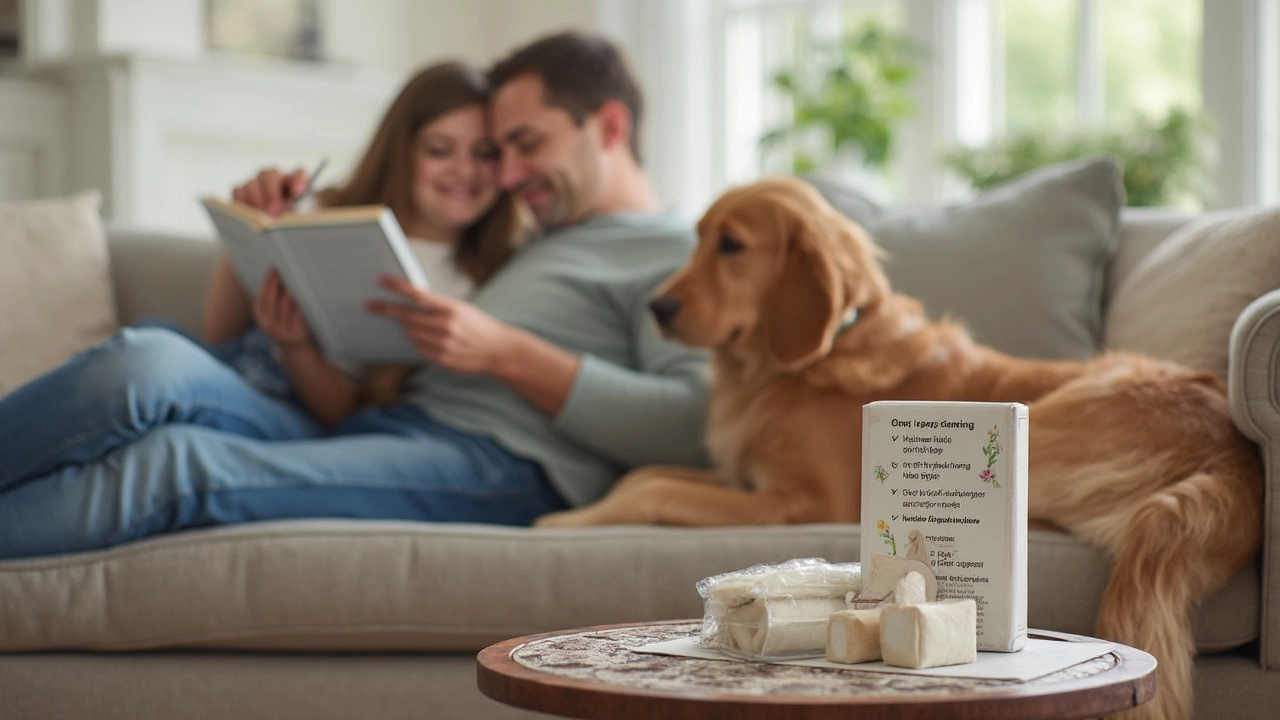
Pro Tips for a Fresh, Stain-Free Couch
Keeping your couch spotless isn’t magic—it’s sticking to a few no-nonsense habits. Stains, weird smells, pet hair? You can tackle all those before they turn into big headaches. Here’s what works:
- Act fast when spills happen. The longer you wait, the harder the stain gets. Blot liquids right away with a clean towel—never rub, that just spreads it around.
- Vacuum your couch once a week. Slide off cushions, get into those sneaky cracks, and remember the arms and back. This isn’t just about crumbs; dust and pet dander build up fast.
- Rotate cushions every couple of weeks. Sitting in the same spot makes dents and uneven wear. Give every cushion a turn up front.
- Using a fabric-safe deodorizing spray or even a sprinkle of baking soda works wonders for funky smells. Let it sit for 30 minutes and then vacuum it off.
I’m always surprised by how much better our living room smells just from that last step, especially after a movie marathon with snacks.
When you’re fighting tougher stains (think red wine, grease, or ink), you need the right weapon. Check out this quick table for stain removal basics:
| Stain Type | Cleaner to Use | Extra Tips |
|---|---|---|
| Red Wine | Mix of mild dish soap, hydrogen peroxide (for white fabrics only) | Test in a hidden spot, blot—don’t rub! |
| Grease | Baking soda or cornstarch | Let powder sit 15 min, then vacuum before gentle spot clean |
| Ink | Isopropyl alcohol (dab with cotton swab) | Don’t overdo it—too much might fade color |
| Coffee | 1:1 vinegar and water solution | BLOT, repeat if needed |
If you’ve got pets, consider an upholstery-safe enzyme cleaner. They’re made to break down the stuff in pet messes that create odors, and they work better than most sprays.
Don’t forget about sunlight. On a clear afternoon, I like to pull couch cushions off and let them air out by an open window. Mold and bacteria hate sunlight, and it’s an easy way to freshen up fabric—no fancy products needed.
The bottom line: a mix of speed, the right cleaner, and regular habits will keep your couch cleaner for the long haul. Trust me, you’ll notice the difference every time you sit down.
